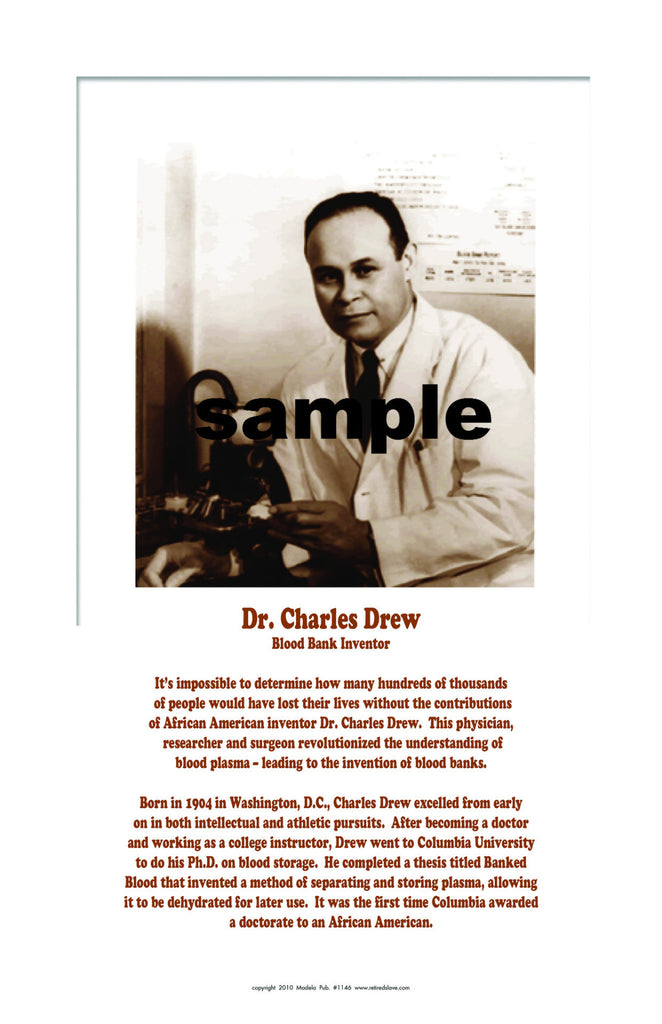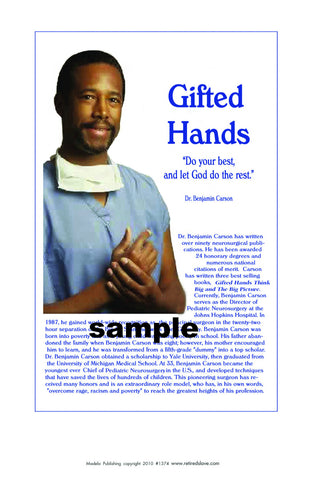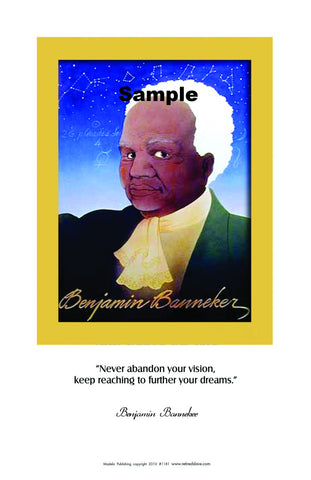Charles Drew M.D. #1146
$ 10.00
Caption from poster__
Dr. Charles Drew
blood bank inventor
It's impossible to determine how many hundreds
of thousawould have lost their lives without the
contributions of African-American inventor Dr.
Charles Drew. This physician, researcher and
surgeon revolutionized the understanding of
blood plasma – leading to the invention
of blood banks.
Born in 1904 in Washington, D.C., Charles Drew excelled from early on in
both intellectual and athletic pursuits. After becoming a doctor and working
as a college instructor, Drew went to Columbia University to do his Ph.D.
on blood storage. He completed a thesis titled Banked Blood that invented
a method of separating and storing plasma, allowing it to be dehydrated for
later use. It was the first time Columbia awarded a doctorate to an African-
American.
Charles Richard Drew was born in Washington DC on June 3, 1904 to
Richard and Nora Drew. He attended Amherst College, where he became
an all-American football player. Amherst College, at that time, was one of
the few white colleges who accepted sizable numbers of black students. In
1926, after graduation from Amherst, Drew took a job at Morgan College as
a biology teacher and athletics director. Earning his money coaching athletes,
Drew then returned to college to receive his medical degree. He graduated
from McGill University's medical program, and took his internship and re-
sidency in Canada. Afterwards, he became a teacher of pathology in Howard
College, and a resident at Freedman's Hospital in Washington DC. He then
worked and taught in New York, at the Columbia-Presbyterian hospital,
receiving his Doctorate from Columbia University. His dissertation was on the
condition of blood stored in blood banks, and the method of storing blood as
plasma (sans white or red blood cells) to increase storage life. He then super-
vised the blood-plasma division of New York City's Blood Transfusion
Association, which was involved in collecting blood for the British Army.
When America went to war in 1941, Drew was named as director of the blood
bank for the National Research Council, collecting blood for the US army and
navy, and setting the groundwork for the Red Cross collecting and banking
procedures. In 1942, Drew returned to Washington DC., where he became
head of Howard University's department of Surgery and chief surgeon at
Freedman's Hospital. In 1944, he was elevated to hospital chief of staff and
medical director, a position he held until 1948. He was killed in an automobile
accident in 1950, on the way to a medical conference. The storage of blood
in plasma form has saved untold lives since Drew brought the process forward
in the thirties, and he created the model for blood and plasma storage that is
used by the Red Cross even today. His importance to modern medicine cannot
be overstated.




